6M grids worked during the contest
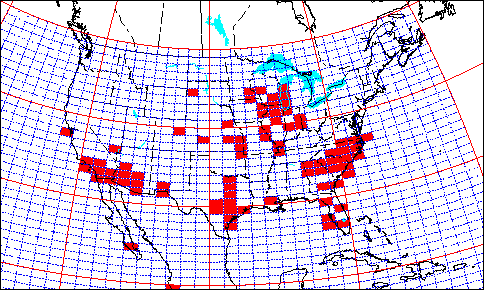
All-time-new grids: CM87, DL44, DM03, DM22, DM23, DM32, DM61, DM62, DM98, DN84, EL89, EL86, EM18, EM26, EM27, EM28, EN33, EN34, EN42, EN44, EM56, EM91, EN64, FM02, FM03, FM06, FM15, FM26
N5XU participated in the ARRL January VHF Sweepstakes conducted from 1900UTC 17 January 1998 to 0400UTC 19 January 1998. We operated in the limited multioperator class, with KA5WSS, KC5EMV, KD5AAD, KD5BWT, and KM5FA operating. We were active on 50MHz, 144MHz, 222MHz, and 432MHz.

Wow! We broke our previous January VHF Sweepstakes record score in the first three hours of the contest! 6M Es was busting in consistently all day on Saturday from the beginning of the contest until nearly midnight. It began out to the west, with West Texas, New Mexico, Arizona, California, and Nevada, slowly developed over the midwest with Colorado, Kansas, South Dakota, Nebraska, Missouri, Illinois, Minnesota, Wisconsin, Indiana, Kentucky, Michigan, and Ohio coming in. Finally, it developed along the eastern South, with North Carolina, South Carolina, Alabama, and Georgia, and ended up late in the evening in Florida. Late Sunday morning brought more Es in from the South, especially from the Virginia and Carolina coasts. Finally, with only a few hours left in the contest, 6M Es opened to the Pacific coast of Mexico! Grid fields worked on 6M during the contest: CM, DK, DL, DM, DN, EL, EM, EN, and FM.
All told, we worked 28 all-time-new grids on 6M, and one all-time-new state (Kansas) for our VUCC and WAS efforts, respectively. No doubt, many of these QSOs were thanks to our use of a "new" 500W linear amplifier. The unit is actually a converted Henry commercial signal generator, and is based on a 3CX800A7 tube. It performed flawlessly on Saturday during the most intense Es, and we were able to work many weak stations that might not have even noticed our 10W barefoot signal!
While 6M dominated our interests during most of the contest, we did manage to work all-time-new grids on each of our four bands. A very nice surprise was working XE2OR in DL98 for an all-time-new grid on 2M, and our first-ever DX QSO above 54MHz! Tropo conditions were good early Sunday morning, with enhanced conditions out to about 400 miles due east, enabling us to work EL49 for an all-time-new 2M grid and even EM40 on 6M, our best tropo distance ever on that band, making EM40 the first grid square we've ever worked on both tropo and Es.
This was our first time ever with 1.25M in the shack. We put together a Down East Microwave transverter, using a modified Realistic HTX-100 28MHz IF radio. The combination (finally debugged and made functional just 60 hours before the contest) put out 15 to 17 watts into a 13-element yagi. While 7 QSOs in 6 grids doesn't look all that impressive at first, in our case, this amounted to 3,284 extra points, which is more points than we had previously scored in all but two of our VHF contest efforts! It turns out that the system isn't as bebugged as we thought, having some microphone and carrier balance problems, but these will be resolved in the near future. It seems like N5XU might be the only fixed station in EM10 with 222MHz gear, as we had to work our own grid with the help of AB5SS/R. We could certainly use 100 to 150 watts on 222 MHz, and this may be one of our next acquisitions.
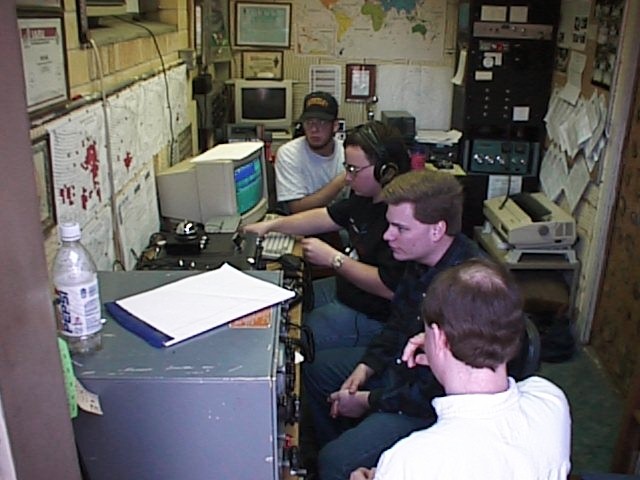
This was also our first contest using 1/2" heliax for the 70cm feedline (replacing some decades-old RG-8/U previously in use.) The improvement was obvious, as we worked longer north-south paths, during periods of little enhancement, than we were able to work previously. Our east-west paths seem constrained mainly by a lack of 70cm stations.
This was the first contest where we really noticed the drawback of having our only 6M yagi on the same rotor as the other bands. We certainly missed out on several 2M QSOs Saturday as our beams were for the most part fixed on the direction 6M Es was happening. Of course, when you only have one tower...
This contest also represents the highest level of interest in a VHF contest the club has ever seen. K5TR spent many hours before the contest helping us with tower and feedline work, conversion of the 50MHz linear amplifier, and debugging the 222MHz transverter and IF arrangement (despite the fact that he himself operated from another QTH during the contest!) Five licensed club members and one soon-to-be-licensed member made QSOs, and a couple others visited the station to see what was happening. With the exception of KA5WSS and KM5FA, none of the operators has very much contesting experience and most have had no previous exposure to VHF/UHF weak signal activity.
The score below won West Gulf Division Limited Multiop and set a new West Gulf Division record!
| Frequency | QSOs | Points | Grids |
|---|---|---|---|
| 50 MHz | 182 | 182 | 81 |
| 144 MHz | 58 | 58 | 16 |
| 222 MHz | 7 | 14 | 6 |
| 432 MHz | 23 | 46 | 9 |
| Total | 270 | 300 | 112 |
| Claimed score | 33,600 |
|---|
Contest Logging was done with TR LOG contest logging software. The following reports and log were created using TR Log's post-contest processor.

All-time-new grids: CM87, DL44, DM03, DM22, DM23, DM32, DM61, DM62, DM98, DN84, EL89, EL86, EM18, EM26, EM27, EM28, EN33, EN34, EN42, EN44, EM56, EM91, EN64, FM02, FM03, FM06, FM15, FM26
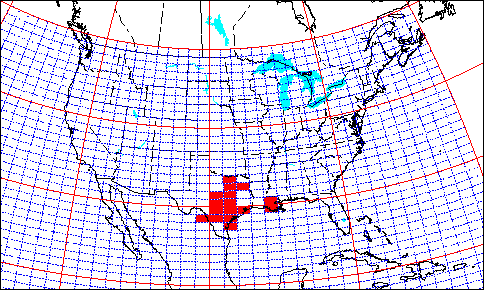
All-time-new grids: DL98, EL49
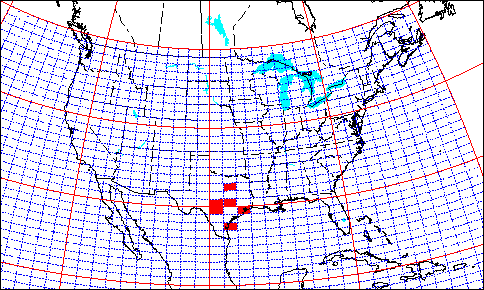
All-time-new grids: EL09, EL17, EL29, EM00, EM10, EM12
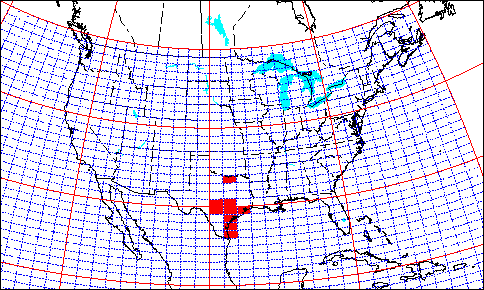
All-time-new grids: EL16, EM13
|
Last Updated 26 June 2020 wm5r@wm5r.org |